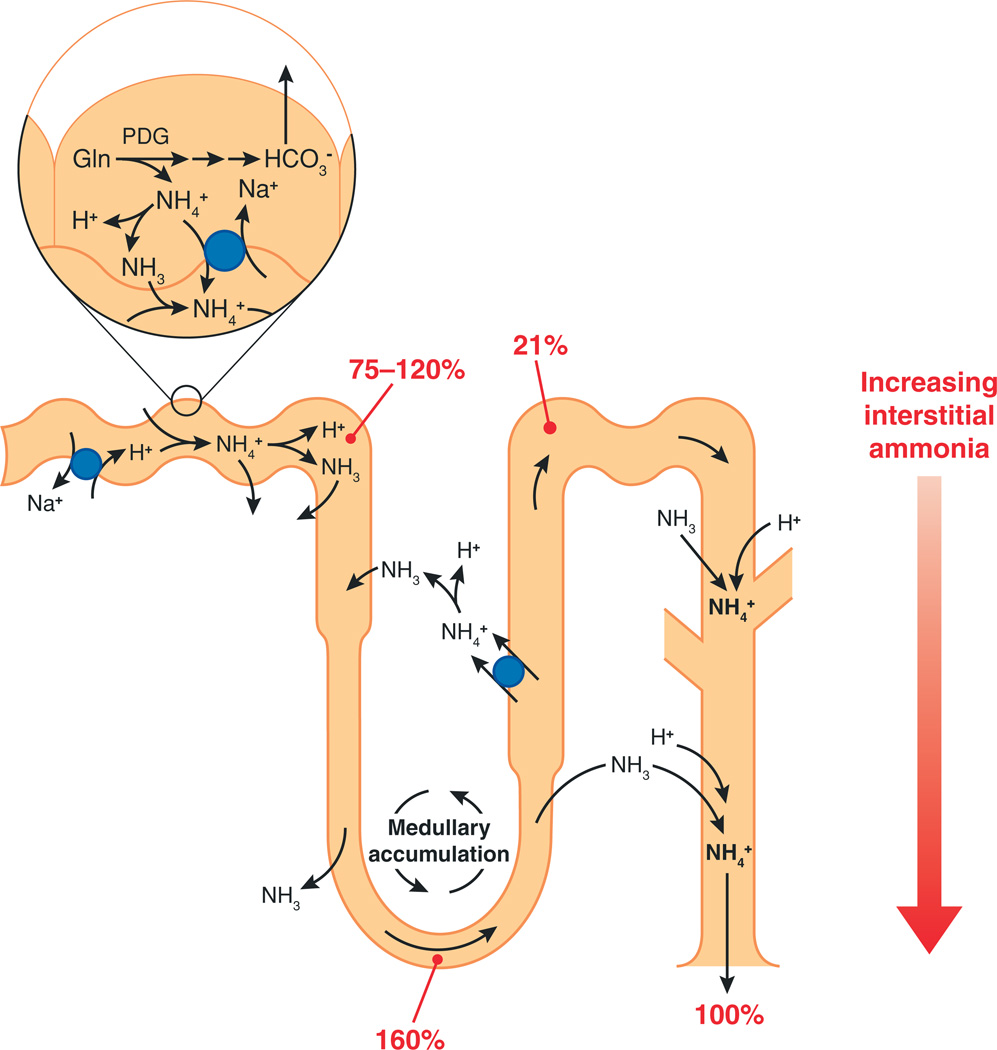Figure 2.
Summary of renal ammonia metabolism. Ammonia is produced in the proximal tubule as a result of metabolism of glutamine (Gln) to NH4+ and HCO3−; ammonia is preferentially secreted into the luminal fluid as either NH4+ or NH3. Bicarbonate produced from ammoniagenesis is preferentially secreted across the basolateral membrane. Ammonia is secreted by the proximal tubule into the luminal fluid and then undergoes recycling by the loop of Henle, resulting in medullary accumulation. Ammonia delivery to the bend of the loop of Henle is ~160% of that which is excreted in the final urine. Ammonia is reabsorbed in the thick ascending limb of the loop of Henle through multiple mechanisms and then is secreted in the collecting duct. Collecting duct ammonia secretion involves parallel NH3 and H+ secretion. Numbers in red represent delivery as a percentage of final urinary ammonia excretion. Blue circles denote transport proteins. PDG, phosphate-dependent glutaminase.

